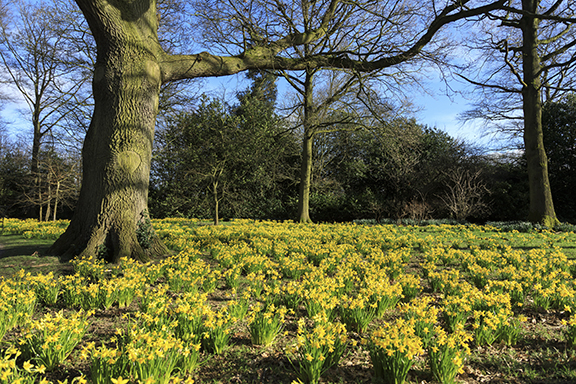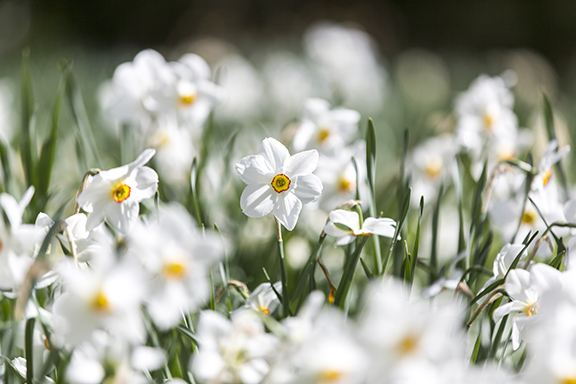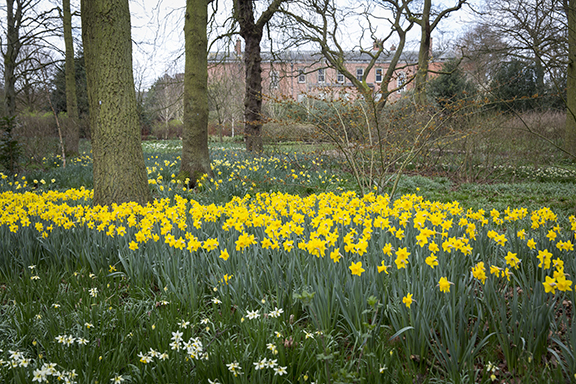- Home
- News
- What’s On
- Activities for Children
- Arts & Crafts
- Autos and Bikes
- Business events
- Car Boot & Auctions
- Charity events
- Churches & Religious
- Comedy
- Dance
- Days out & Local interest
- Education
- Exhibition
- Film
- Gardening & Horticulture
- Health
- Markets & Fairs
- Music
- Nature & Environment
- Spiritual
- Sport
- Talks and Discussions
- Theatre and Drama
- Business
- Local Information
- Jobs
- Deaths
- Charity events
- Contact Us
Say hello to the golden glow of early spring

Say hello to the golden glow of early spring at Dunham Massey – and five other National Trust daffodil hotspots in the North West
One of the UK’s largest winter gardens will be even bigger and brighter this year – and now’s the time to visit for a spectacular display of daffodils.
From now until late spring, visitors can experience the winter garden colours at Dunham Massey, near Altrincham, at their most vibrant. You’ll want to visit more than once to savour the ever-changing sights and scents of seasonal favourites including snowdrops, daffodils, hyacinths and tulips, against the backdrop of the Georgian house and Orangery.

Last year, National Trust gardeners planted over 40,000 extra spring bulbs, of which around 4,000 were daffodils, adding to the already-dazzling golden glow that visitors love to see in the meadows.
It has taken National Trust volunteers and staff around 1,400 hours to plant the new bulbs and create the displays of daffodils and early spring flowers, with work starting in September and continuing until the beginning of December. The planting has taken place across the garden in areas of varied light, from more open meadowed areas to spaces with dappled light protected by veteran trees.
Among the thousands of new bulbs, you’ll find daffodil varieties including ‘January Silver’ (which, confusingly, flowers in February), with its white petals and bright yellow trumpet, and ‘Jetfire’, which has bright yellow petals and a vibrant orange trumpet.
Snap the perfect picture of daffodils in flower alongside the Georgian house, and charming white tazetta daffodils accompanying views of the Orangery.

Megan Pearson, Gardener at Dunham Massey, said: “Now is the time to experience the early spring joy of the Dunham Massey gardens. From now, throughout March, the gardens are constantly changing and, due to the extensive variety of bulbs, will look different from week to week.”
Donations from visitors and National Trust supporters have made the planting possible, including donations at the Dunham Massey till, sales of pin badges and second-hand books, and donations specifically to the garden.
Dunham Massey gardens are open every day from 10am to 5pm.
Five more daffodil hotspots in the North West
Experience more of the season’s best blooms at these five National Trust places in Cheshire, Lancashire and Liverpool.
Quarry Bank, Wilmslow
Wander the daffodil-flanked path from Quarry Bank house to the upper gardens at this former industrial site. A treat from the Upper Garden café awaits at the end of your walk.
Lyme, Stockport
Lyme is the National Trust’s second highest garden, so spring bulbs often flower later than at other properties. Each autumn the formal beds outside the orangery are planted with over 4,000 bulbs. In spring, there’s a continuous display of fabulous colour as the bulbs flower, starting with daffodils and followed by hyacinths and then tulips.
Speke Hall, Liverpool
Daffodils along the main drive are one of the main spring highlights at Speke Hall, while tens of thousands more can be found along the upper moat garden path. The black-and-white Tudor manor provides the perfect backdrop to the yellow spring flower.
Rufford Old Hall, Ormskirk
Rufford Old Hall is picture-perfect in springtime. Daffodils spring up across the garden, and purple crocuses take over the Beech Walk Paddock, creating the perfect photo opportunity with the hall in the background.
Hare Hill, Macclesfield
The Walled Garden will be bursting with blooms in the springtime, providing the perfect space for visitors to pause, refresh and appreciate the colours and scents. The carriageway will be lined with daffodils and crocuses, and the rockery will be full of colour.
Top tips for gardeners
About to start doing some gardening of your own and need inspiration? Here’s Megan Pearson, Gardener at Dunham Massey, with some expert advice:
“For garden and nature lovers, there’s benefit in not manicuring your gardens too much at this time of year. Leaving fallen leaves to rest in borders protects soil and helps create much needed habitat in the colder months. And for those looking to bring an early pop of colour to the cool days, consider daphnes or winter box for lovely, scented winter flowering.”

You must be logged in to post a comment Login